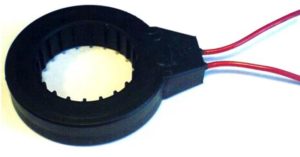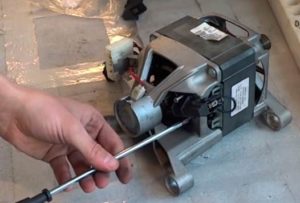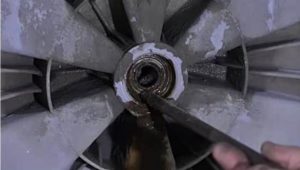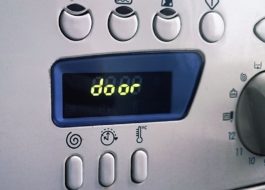Beco washing machine does not wring
 If the cycle is over and there is water or completely wet things left in the drum, then there is only one conclusion - the washing machine does not wring out. Such a nuisance is often found in VEK washers, and this is not always the case with a large-scale problem. To understand what led to the failure, banal carelessness or a serious malfunction, our article will help. We will analyze the possible sources of inferior spin and give instructions for resolving them.
If the cycle is over and there is water or completely wet things left in the drum, then there is only one conclusion - the washing machine does not wring out. Such a nuisance is often found in VEK washers, and this is not always the case with a large-scale problem. To understand what led to the failure, banal carelessness or a serious malfunction, our article will help. We will analyze the possible sources of inferior spin and give instructions for resolving them.
List of possible problems
Tolerate wet underwear is not worth it. Finishing an ungrateful job behind a washer is not only unpleasant and long, but, even worse, an unresolved breakdown can aggravate the problem right up to a disastrous outcome. To know where to look for a malfunction, you need to deal with the range of possible causes of failed spin. For Beco models, we are talking about the following situations:
- program without spin is selected;
- drum imbalance occurred;

- the drain does not function;
- the tachogenerator is out of order;
- the electric motor is broken;
- drum bearings are worn out;
- the control board does not work;
- a foreign body has entered the tank, preventing the drum from spinning.
In 99% of cases, the problem can be solved independently. The help of a professional repairman is needed only with a burned-out control module. It remains only to correctly diagnose the source of the problem, for which it is enough to consistently check each possible option. Step-by-step instructions are provided below.
Check the washing program
First of all, it is recommended to screen out trouble-free situations. Often there is no breakdown, and by mistake the user switches on a mode that does not imply intensive rotation of the drum. So, spin is not provided for delicate washing and for programs wool, silk, fluff.
To confirm your suspicions, you must remember the selected button and read its description in the factory instructions. The next time it is enough to change the mode or additionally turn on the squeezing cycle. Secondly, we check to see if the spin was canceled by chance in the standard program.
Important! Do not neglect the lock of the dashboard, which will help you not to worry about accidental switching.
Many modern models allow you to vary the speed of rotation of the drum until it is completely canceled. It is better to conduct a test: select a mode, set the push-up to maximum and restart the machine. Wet things will be the reason for further verification.
Let's look at the laundry in the drum
Often the spin of the Beco machine does not work due to the imbalance that has arisen in the drum. Overload, insufficient loading or uneven distribution of linen on the walls of the tank leads to imbalance. This problem occurs with old models, as modern machines are equipped with a special function that controls the balance during washing and spinning.
It is easy to suspect something was wrong: in this case, the unit repeatedly tries to unwind, but to no avail. As a result, the cycle ends 7-15 minutes before the appointed time, and the laundry remains wet. The situation can be corrected as follows:
- Wait for the hatch to unlock and open the door.
- Get half the laundry (if overload was allowed), unravel the twisted “lump” or report things (if there is a shortage).
- Close the hatch tightly.
- Run spin.
- Check the laundry for dryness.
An imbalance adversely affects shock absorbers, the bearing assembly and the shaft, so it is better to avoid it. It is important to control the amount of laundry loaded and remember both the upper and lower bounds. So, in a machine with a capacity of up to 5 kg it is necessary to wash at least 1 kg, and in washers with a maximum of 8-9 kg - 2.5 kg.
Waste water is not removed
If at the end of the cycle in the drum not only wet things, but also a full tank of water - you should pay attention to the drainage system.It is possible that the machine simply can not drain the waste fluid due to a burnt out pump, a blocked impeller of the pump, or blockage in the hoses or pipes. We are looking for a specific reason and its solution in the following sequence:
- Disconnect the drain hose from the sewer and probe it along the length for blockages. If foreign objects are found, we unscrew the pipe completely and rinse it under high pressure of water.
Attention! Sometimes the general sewage system becomes clogged, so we lower the disconnected end of the drain hose into the sink or bathtub, start the drain or spin mode and wait for the water to flow.
- We find a drain hatch in the lower right corner of the washer body and, prying it with a screwdriver, open it. We substitute a container for collecting water and unscrew the trash filter. We clean the part and its fittings. If everything is clean, call the contacts with a multimeter.
- Check the integrity of the pump. We free the impeller from wound hair and wool, clean the pump casing and measure the value of the existing resistance.
The pump and filter are not repairable and in case of breakage are replaced with new ones. After all the manipulations, we start the machine for the fastest washing and monitor the drain of water. An empty drum eliminates the fault of the drain system.
Hall sensor does not function
 Spin does not work even with a faulty tachogenerator. This device, also called a Hall sensor, is responsible for monitoring the number of revolutions by the engine and transmitting information to the control board. If it breaks down - communication with the module is lost, the system ceases to receive information and, for security reasons, reduces motor power.
Spin does not work even with a faulty tachogenerator. This device, also called a Hall sensor, is responsible for monitoring the number of revolutions by the engine and transmitting information to the control board. If it breaks down - communication with the module is lost, the system ceases to receive information and, for security reasons, reduces motor power.
Breakage provokes improper operation of the machine, in particular:
- Regular overload of the machine with linen.
- Continuous use of the machine without stopping.
- Loose mounts.
- Broken contacts or damaged wiring.
- Power surge or short circuit.
First of all, inspect the wires and, if necessary, tighten the terminals, strip and isolate the conductors. Next, nicknamed the sensor itself with a multimeter and evaluate the results. In case of deviations from the norm - replace with an analog.
The motor does not spin the drum
 Another situation arises when the engine is not able to accelerate to the required power. In collector motors, braking is possible with worn out electric brushes: washing and rinsing proceeds normally, and spinning becomes impossible. If other stages of the cycle have also passed with difficulty, a breakdown of the engine itself is possible. The conjecture is checked in the following way:
Another situation arises when the engine is not able to accelerate to the required power. In collector motors, braking is possible with worn out electric brushes: washing and rinsing proceeds normally, and spinning becomes impossible. If other stages of the cycle have also passed with difficulty, a breakdown of the engine itself is possible. The conjecture is checked in the following way:
- We disconnect the machine from all communications.
- Unscrew the back cover.
- Remove the drive belt.
- Disconnect all the failed places.
- Weaken the holding fasteners.
- We swing the motor and get it from the grooves.
Next, wipe the case with a cloth and inspect for damage. A burned out engine has an unpleasant burning smell, stains and charred wires. Then we pay attention to the electrobrushes: remove them from both sides of the engine, open and measure the length of the tip. If it is less than 0.7 mm, you will have to change the pair to a new one. At the same time we call the coils.
Electronic unit malfunction
Worst of all, when an electronics crash. In this case, the triac responsible for the spin burns down, the engine does not receive commands for acceleration and is not able to disperse the drum. To determine that the reason is in the module, only a specialist can, therefore, at the slightest suspicion, it is worth contacting the after-sales service.
It is not recommended to repair the module yourself. It is likely that a lack of experience, equipment and professionalism will result in the final breakdown of the board. A replacement part is expensive and cheaper to pay for the services of a master.
Foreign object in the tank
Prevents unwinding of the drum and a foreign object that has fallen into the tank.It is necessary to react here as soon as possible: a foreign body can damage the walls of the containers and lead to jamming of the entire system. Replacing the tank is very expensive, so at the slightest suspicion it is recommended to stop the machine and remove the dangerous element.
The thing is not easy to get, and it is better to first confirm the diagnosis. To do this, cut down the machine from the network, drain the water, open the hatch door and scroll the drum in both directions. The encountered resistance clearly indicates an existing obstacle, so let's get down to business:
- Check the disconnection of the unit from the power supply.
- We block the water and disconnect the drain hose.
- We provide free access to the machine from all sides.
- We unscrew the bolts at the back and remove the back wall.
Important! Learn in advance in the instructions on which side in your VECO model the heater is located.
- Find the location of the heater.
- We photograph the heater so as not to mix the wires when returning.
- We loosen the holding bolts and remove the heating element.
- We put fingers or long pliers into the vacant place and pull out the object that has fallen into the tank.
When the trouble has left the machine, it is worthwhile to conduct an extraordinary cleaning for the heater. Scrape off its surface from scale and dirt, do not forget to clean the contacts. After we return everything to its place and test the rotation of the drum.
Bearing problems
 It is possible to suspect that a faulty bearing assembly is to blame for poor-quality extraction by sounds emanating from a working machine. Unusual noise, creaking, knocking say that the seals have served their seven-year life and leaked, ruining the bearings with washed grease and corrosion. These elements cannot be restored to their factory state - only replace bearings and oil seals with similar parts.
It is possible to suspect that a faulty bearing assembly is to blame for poor-quality extraction by sounds emanating from a working machine. Unusual noise, creaking, knocking say that the seals have served their seven-year life and leaked, ruining the bearings with washed grease and corrosion. These elements cannot be restored to their factory state - only replace bearings and oil seals with similar parts.
Here, instructions on what to do will not be short and simple. Firstly, it is necessary to find suitable analogues for replacement, being guided by the serial number of the VEKO model. Secondly, disassemble almost the entire machine, up to removing the balances and tank. Thirdly, carefully knock out the rusted rings without damaging the shaft and walls of the drum. Complicating the work is the absence of an amateur repairman with a special puller, as well as a number of other tools and supplies.
Before getting down to business, one should weigh the pros and cons and decide exactly whether there is enough strength and experience for such work. There is a high probability of damaging the wiring, spoiling the pipes or breaking the tank. But it is worth considering the high cost of such repairs: on average, replacing the bearing assembly and seals costs a third of the price of a new washing machine.
But no one forbids first to get to know the process in more detail and evaluate their strength. The main thing is to carefully consider all the actions, prepare everything you need and enlist the help of an additional pair of hands. Step-by-step instructions for changing bearings with your own hands are given in this article.
Interesting:
Reader Comments
- Share your opinion - leave a comment
Headings
Washing machine repair


For buyers
For users

Dishwasher


















Add a comment